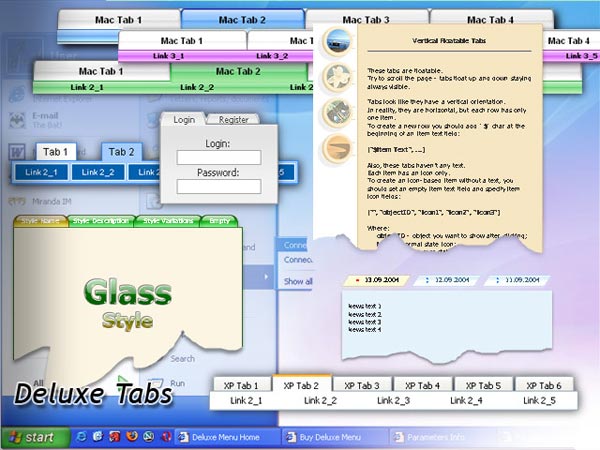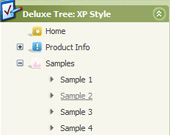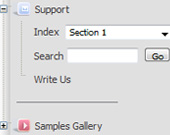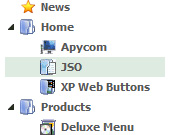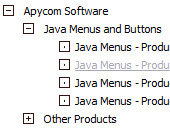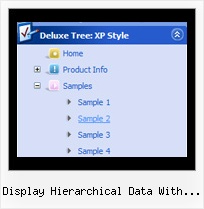Template: Display Hierarchical Data With Treeview Jsp
XP Style Blue XP Style Javascript Menu Tree
Different XP Styles
You can create any style for XP menu:
- different icons, colors, and buttons for each submenu title;
- any color for borders, backgrounds, and font of menus and items;
- any available font style;
and many other options!
Different XP Styles
You can create any style for XP menu:
- different icons, colors, and buttons for each submenu title;
- any color for borders, backgrounds, and font of menus and items;
- any available font style;
and many other options!
Key features:
- Relative/Absolute menu position
- Submenus have a fade effect
- Movable and floatable menu
- 3-state icons for each item
- different speed for an animation for submenus
- Items with icons
- Each item can have individual settings
- Several menus on one page
- Relative/Absolute menu position
- Submenus have a fade effect
- Movable and floatable menu
- 3-state icons for each item
- different speed for an animation for submenus
- Items with icons
- Each item can have individual settings
- Several menus on one page

